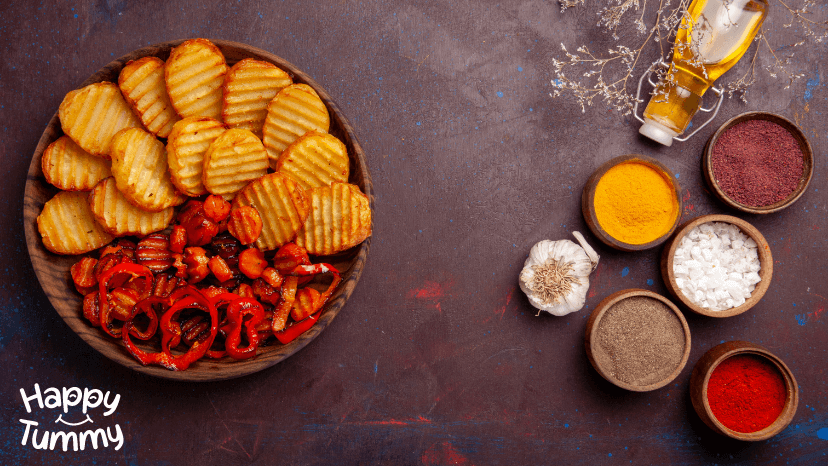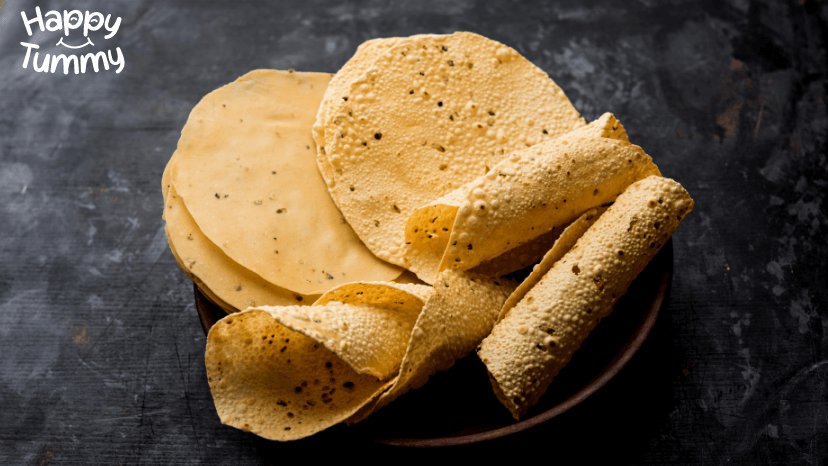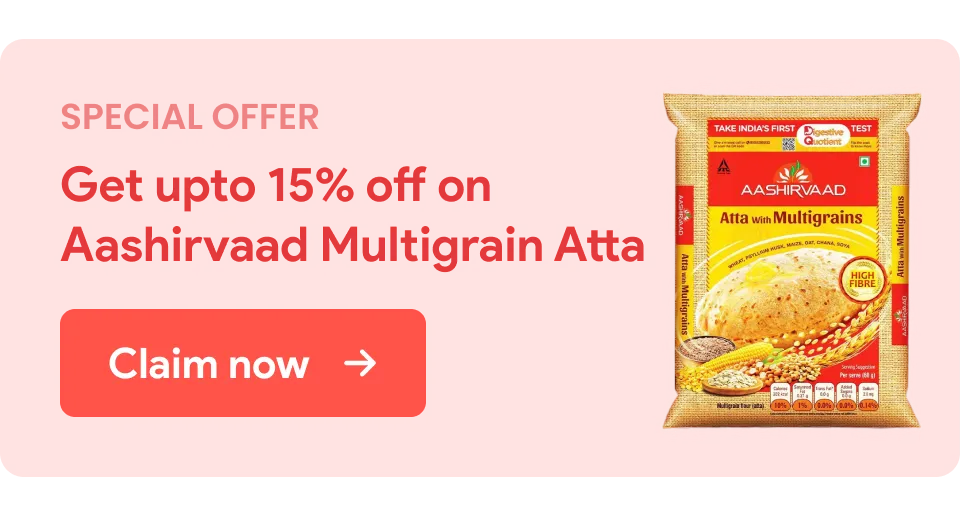Table of Contents
Do you understand that the average Indian takes approximately 3 to 10 g of salt per day? However, health experts recommend that our salt intake should not exceed 5 g daily.
Indian food intake data shows that salt consumption varies across different states in India, with around 45% of the population consuming more than the recommended limit [1].
You must know that the current recommendation for sodium intake in India and by the World Health Organization (WHO) is 2,300 mg per day.
This is roughly equivalent to about 5,000 mg or 5 grams (which is about one teaspoon) of common salt (table salt) each day [2].
Sodium chloride (table salt) is the most widely used source of sodium in foods. But is it only from salt, or should we look for other contributors on the food label?
Sodium can come from several sources [3]:
- Natural Source: There are some foods that contain sodium naturally.
- Additives: Stabilisers, emulsifiers, dough conditioners, and preservatives. Other hidden sources include baking soda, sodium bicarbonate, monosodium glutamate (MSG), sodium saccharin, sodium benzoate, and sodium nitrate.
Given the high standard of living and the booming urban lifestyle, quick and convenience foods like processed foods and ready-to-eat foods are more forthcoming, resulting in different health complications.
The Role of Sodium in Health
Sodium has many important functions in our body. Here are some positive aspects of sodium [4]:
- Maintains water and fluid balance in the body
- Enhances muscles as well as nerve functionality
- Regulates blood pressure
However, while sodium is necessary, consuming too much may lead to health concerns.
According to the Indian Council of Medical Research (ICMR), increased salt intake may result in [5]:
- High blood pressure (hypertension)
- Impact heart health
- Stroke
Other risk factors include [6] [7]:
- Water retention
- Stresses the kidneys to filter sodium
- Influence bone health
- Calcium elimination through urine [8]
Which Indian Food Has High Sodium?
According to the ICMR, processed and pre-packaged foods, such as chips, drinks, sauces, biscuits, and bakery items, are the major contributors to our sodium intake. However, this is not limited only to ready-to-eat or junk food.
Even our homemade foods like savoury snacks, namkeen, papads, pickles, and beverages with added salt may add up to our high salt intake [9].
Let’s discuss some everyday items that we eat for their taste but are surprisingly sodium-rich foods.
#1 Pickles (Achar)

- Fermented products such as pickles of mango, cucumbers, radishes, and lime are essentially part of every Indian home.
- The pickling process involves soaking fruits and vegetables in a salt solution for preservation and flavour. This is why pickles contain 15-20% salt and are considered to be one of the most salty foods [10].
- You may try brands that offer non-sodium salt alternatives, where they mix regular salt with potassium chloride or calcium chloride.
#2. Processed Cheese [11]

- Processed cheese is partially distinguished from natural cheese because it contains emulsifying salts, milk solids, natural cheese, butter oil, other dairy ingredients, and vegetable oils, among other things.
- Also, salt is added for texture, flavour, and colour, adjusting the moisture content and preventing microbial growth and acid development [12].
- In terms of nutrition, processed cheese is generally similar to natural cheese, although it usually has a higher sodium content than the latter.
#3. Instant Soups and Noodles

Easy to prepare and readily available, instant soups and noodles have been everyone’s go-to food.
However, they contain flavour enhancers such as sodium glutamate and other salts [13].
In India, instant noodles may contain about 2.28 g of salt for every 100 g [14]; however, it may vary from one brand to another.
Therefore, consuming a packet of instant noodles may cover about half of the daily salt needs [15].
In one study, over two-thirds of Asian countries, including India, were examined. Less than 55% of their instant noodle products met the Pacific Salt Reduction Target of 4 grams of salt per 100 grams. This suggests that many instant noodles available are salty and are often overlooked as a major source of sodium in diets [16].
#4. Instant Masala Mixes or Spice Powders

- Most spices and condiments are associated with relatively high sodium content, and they may contain between 401 and 10,640 mg of sodium per 100 g [17].
- They include salt to improve the taste and act as a preservative.
- When you use several instant masala packs at a time, the sodium in your food may increase by several hundred milligrams.
#5. Potato Chips and Namkeen

- Everyone enjoys potato chips, but the amount of salt in them averages from 1.2 to 3.5g per 100 g [18].
- According to Indian food regulation standards, the salt level of potato chips should not exceed 2.5% of the weight [19].
- One study indicated sodium levels in snacks, including chips, traditional snacks, and savoury mixes, may range from 1,500 to 4,000 mg per 100 g [20].
- Thus, you may consider non-salted chips occasionally without overdoing it on sodium. The homemade chips that are freshly prepared with less added salt and oil are also a better choice for occasional snacking.
#6. Sauces

Seasoning is mostly achieved by using sauces for their flavours, but most have very high sodium levels.
For instance, soy sauce, an essential ingredient in many Indo-Chinese dishes, contains about 5,493 mg of sodium per 100 g [21]. Similarly, pasta sauce contains about 344 mg of sodium for every 100 g [22].
These amounts can quickly add up to your daily sodium intake; thus, use them occasionally in moderation or opt for low-sodium soy and pizza sauce alternatives. Instead of relying on store-bought versions, you may create sauces with fresh tomatoes, herbs, and spices.
#7. Baked Foods

- In baking, salt is used to control fermentation and improve texture [23].
- For instance, brown bread may typically contain 714 mg of sodium per 100 g [24], while white bread has about 532 mg [25]. These values may differ depending on the brand.
- One study showed that baked goods may cover 48.2% of adults’ sodium requirements. However, with more consumption, they may account for 35% to 50% of the total sodium intake [26].
- Also, sodium comes from other ingredients like baking powder and leavening agents in baking [27].
- This means that bakery products, such as biscuits and pastries, may greatly influence one’s sodium consumption. Thus, you may opt for low-sodium bread alternatives or sourdough.
One more positive aspect is that you can use Ragi Aata by Aashirvaad to make healthy baked foods at home. It does not contain gluten and might contribute to calcium, iron, fibre, and protein intake, which may assist with bone health, haemoglobin production, digestion, and muscular maintenance.
#8. Salted Butter

Dairy products, including butter, may contribute significantly to our overall sodium intake, as they contain high levels of salt in their composition [28].
Suppose you use salted butter in your cooking. In that case, there’s usually no need to add extra salt to your dishes, or alternatively, you may use unsalted butter to manage your sodium consumption effectively.
#9. Seafoods

- It is good to understand what type of seafood to take and in what manner because their sodium levels differ.
- Fresh sea fish is very low in sodium; a serving has only about 140 mg. Similarly, the sodium levels in frozen, canned, smoked, and cured fish, which are processed products, range between 300 and 900 mg per 100 g [29].
- For example, fresh crab (Portunus sanguinolentus) contains approximately 244 to 313 mg of sodium per 100 g [30].
Similarly, other dry fishes are generally heavily salted because of traditional preservation methods. Thus, if you consume seafood that is already high in sodium, it’s wise to adjust the portion size or limit other high-sodium foods in your diet.
#10. Papad

- Papad is another popular and easily found food item in Indian homes that is enjoyed with meals.
- However, you must note that it contains between 840 and 1,745 mg of sodium per 100 g, which is quite high compared to other snacks [31].
- The salt added to papads enhances their flavour and preserves them, but it may also significantly add to your overall sodium levels.
- While they are often eaten in small portions, it’s easy to consume more than intended. This may lead to higher sodium intake, which might impact health if consumed frequently and not balanced on time.
How Can I Cut Down My Sodium Intake?
Basically, in India, most of the dietary salt is obtained from home cooking. Other factors play a part when it comes to sodium intake. Here’s how [32]:
- Selecting more Western foods that are not as homemade, whole, balanced or filling as they should be.
- It is also easy to find ready-to-eat meals.
- Advertisements encourage junk foods.
- Changing taste preferences – switching to alternatives like pink Himalayan salt, which may offer higher mineral levels.
On a related note, when thinking about sodium moderation, do not disregard the possibility of enriching your diet with fibre and improving your digestion in general.
One way to learn more about your digestive health is to test your ‘Digestive Quotient‘ with Aashirvaad and evaluate your current condition to lead a healthy life.
Practical Ways to Manage Sodium Levels [33]
However, in balancing adequate sodium intake, you must also consider fibre intake since both are essentials for the body.
Aashirvaad has a ‘My Meal Plan’ test that can help you check if you are getting the right nutrients and fibre in all meals.
| Change Habits | 1. Don’t add white salt to rice or chapati dough. 2. No salt on salads and fruits.Limit salty foods like butter and sauces. 3. Restrict added salt to a maximum of 5g per day [34]. 4. Develop a taste for foods or diets that are low in salt, and ensure that children pick up on this habit from an early age. 5. Don’t add white salt to rice or chapati dough.No salt on salads and fruits. 6. Limit salty foods like butter and sauces.Restrict added salt to a maximum of 5g per day [34]. 7. Develop a taste for foods or diets that are low in salt, and ensure that children pick up on this habit from an early age. 8. Avoid using baking soda and MSG. 9. Eat fresh fruits instead of salty snacks 10. Shop seasonal and local produce. 11. You must include fruits and vegetables in your daily diet, as their potassium content may help you excrete excess sodium from the body and help maintain blood pressure [35] [36]. 12. Drink 8-10 glasses of water every day. This might help remove extra sodium and other toxins from your body. Tips for Dining Out: 1. Ask for less salt in your meals. 2. Avoid pickled or smoked foods; they’re salty. 3. Choose steamed or baked options. |
| Watch Out for Hidden Salt | 1. Limit processed and preserved food intake. 2. Restrict sauces, ketchup, salted chips and biscuits. 3. Eat bread and cheese in moderation. 4. Read labels. Here’s how you can understand sodium levels: Low Sodium: Less than 0.12 grams per 100 g. Very Low Sodium: Less than 0.04 grams per 100 g. Sodium Free: Less than 0.005 grams per 100 g. |
Takeaway
A relief for people in India is that most food groups, such as fruits, vegetables, and milk, are not scarce anywhere in the country. Finally, eat a balanced diet by increasing your intake of wholesome foods with dietary fibre, proteins, minerals, and other essential nutrients.
Similarly, do not cut off everything all at once, as it takes time to build resilience. From this blog, we have attempted to improve your knowledge of the potential effects of consuming only foods containing sodium.
You may eat these foods in moderation as long as you balance them with other sound nourishments.
If you’re switching to a diet or even have doubts about your health concerns, consult a happy tummy nutritionist to get clarity on what your plate should look like. Also, don’t get influenced; choose what works for your body.
FAQs
The WHO, the Indian Council of Medical Research, the National Institute of Nutrition, and the National Programme for Prevention and Control of Non-communicable Diseases recommend that we eat less than 5 grams of salt each day [37]. The current Indian and WHO recommendations for sodium intake is 2,300 mg, which is the same as 5,000 mg or 5 grams (1 teaspoon) of common salt per day [38].
Yes, bananas may help flush out sodium from your body because they are naturally rich in potassium. Eating foods high in potassium, like bananas, may help balance the sodium levels and help your body get rid of extra salt [39]. This may eventually help you maintain your blood pressure.
Eggs are a low-sodium food, as a whole-boiled egg only contains 121 mg of sodium per 100g [40].
Milk is not high in sodium. In fact, it naturally contains a small amount of sodium. For instance, buffalo milk has 30.10 mg of sodium, and cow milk has 25.46 mg [41]
We have addressed the common questions about sodium-rich foods. However, if you have more inquiries, feel free to ask a Happy Tummy certified nutritionist for detailed assistance with your health and nutrition concerns.
















